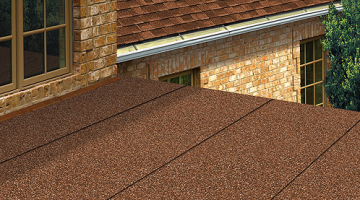A flat roof is a level of contrast to many types of sloped ceilings. Flat roofs are an ancient form used in arid climates and allow space to be used as living space or a living roof when it comes to supplying installing and maintaining your flat roof in Bristol. Whether you require a Flat Roofing Bristol or not. Flat roofs are characteristics of the Egyptian, Persian, and Arabian styles of architecture.
- Bitumen Roofing
- Liquid membranes
- Single-ply roofing
- Green roofs are the types of flat roofing.
Bitumen roofing
The standard methods for creating a watertight flat roof. Trades are built-up roofing, bitumen membranes, the material felt, mastic asphalt.
Liquid membrane
It is a cold applied seamless waterproofing system designed trade names are EPDM liquid roofing, rubber membranes, and cold-applied roof.

Single-ply roofing
Single-ply roofing is parted as flexible sheets of compounded plastic material with common trade names are PVC roofing, TPO roofing, EPDM roofing, and neoprene roofing.
Green roofs
Green roofs are completely shielding or covered with growing medium, planted over the waterproofing membrane with common trade names of living roof, sedum roof, intensive living roof, and biodiverse roof.
Purpose of a flat roof
The point of a flat roof in residential construction was to save on contract costs. Flat roofing materials are cheaper than other roofing materials. They are such as asphalt shingles, metal roofing, wood shakes, tile roofs, etc. Air conditioning units are few times placed on flat roofs to avoid being an eye sole on the ground. Flat roof lops can also be used as roof decks or observation decks.
Advantages of flat roofing
The most significant edge of a flat roof is the expense. The materials commonly used for flat roofs are relatively cheap. Its insulation somewhat board is cents per foot. Installation of a flat roof is quicker, and more comfortable labour is less expensive due to less risk while installing a flat roof. Another advantage is space can be used for other purposes. It also makes interior space more versatile. Flat roofs are substantially more stable than slanted ceilings when then the building is small.
Disadvantages of flat roofing
The disadvantages of installing a flat roof are the drainage of lack. The roofing materials are breaking down or to regular leaks, particularly among the seams. They have a limited life span. The life expectancy is between ten to fifteen years. They are more expensive because they are recently developed products, there is no information about how long they will last. There are flat roof companies that feel insulation and snow weight problems are misconceptions. Flat roofs or low slope roofs are also commonly found in commercial buildings throughout the world. Lack of maintenance and cracking in roof sheets are the few things which lead to the failure of flat roofs. But even though people are preferring these flat roofs and the interior decorations for their villa or even to the flats. It became like a trend to this twenty-first-century architecture field. So, people are focusing on it though it has some drawbacks and all as mentioned above.

